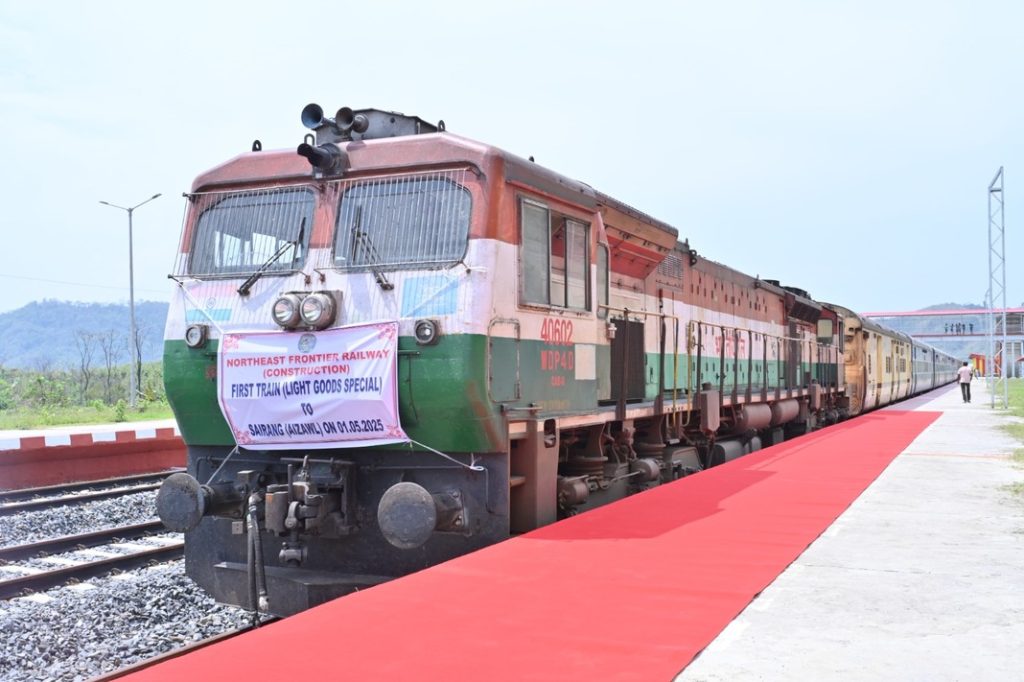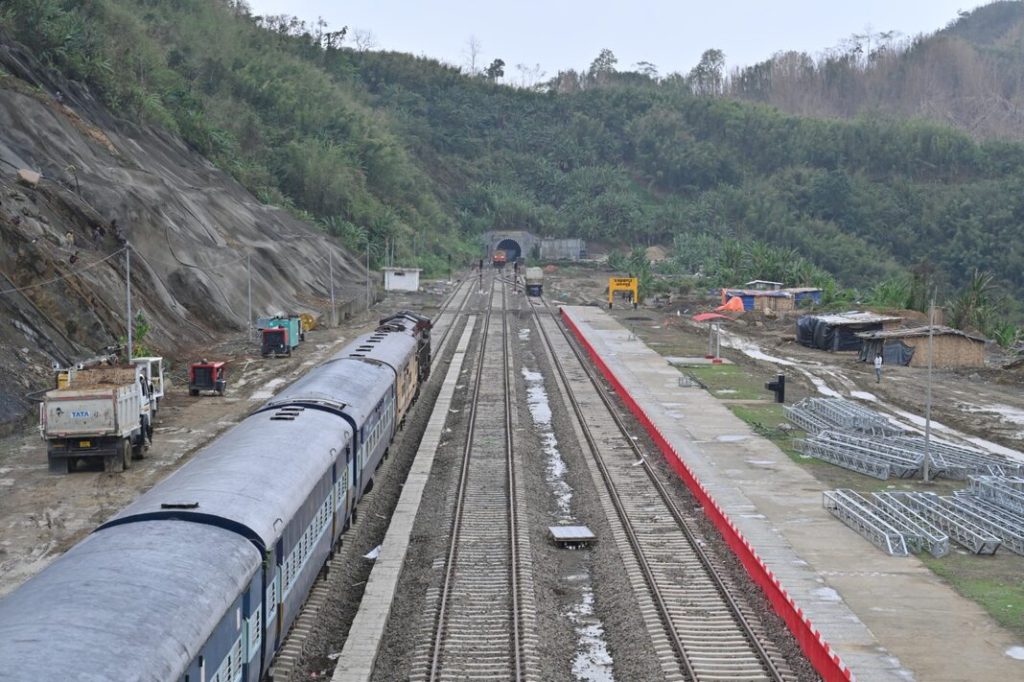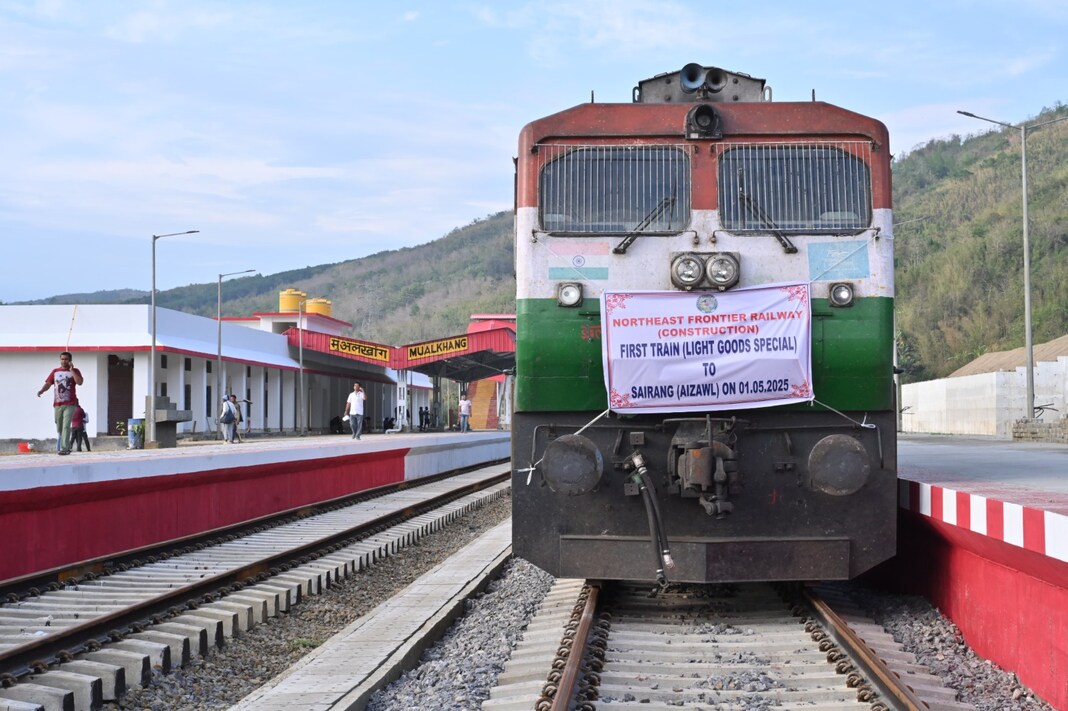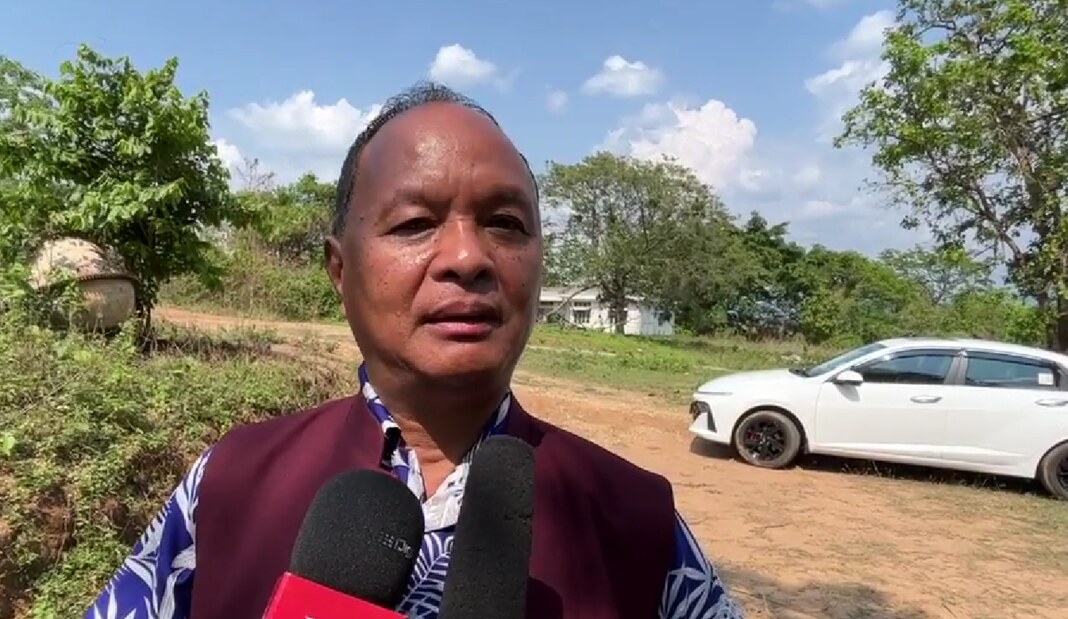
Guwahti, May 2: In a landmark development for the Northeast, the Northeast Frontier Railway (NFR) conducted its first-ever trial run to Sairang — the railhead nearest to Aizawl, the capital of Mizoram — on May 1, marking a major leap in connecting the state to India’s national railway network.
With this successful trial, Mizoram becomes the fourth northeastern state to achieve capital connectivity by rail, after Assam, Tripura, and Arunachal Pradesh. The milestone reflects years of challenging engineering work aimed at overcoming the region’s tough terrain.

The trial run was carried out in the presence of Arun Kumar Chaudhary, general manager (Construction), NFR, along with senior railway officials. Their presence underscored the significance of the event and the efforts that went into the execution of the Bhairabi–Sairang railway project.
Chaudhary briefed Mizoram Governor General (Dr) Vijay Kumar Singh and Chief Minister Lalduhoma on the strategic importance, scope, and progress of the project. He noted that the final inspection by the Commissioner of Railway Safety is expected in early June, with a formal inauguration likely after June 17.

The Bhairabi–Sairang New Line Railway Project spans 51.38 kilometres and is being hailed as an engineering marvel. It comprises 48 tunnels totaling 12,853 meters in length, 55 major bridges, and 87 minor bridges. Notably, Bridge No. 196 stands 104 meters tall — 42 meters higher than the Qutub Minar.
The project also includes 5 Road Over Bridges (ROBs) and 6 Road Under Bridges (RUBs), and has been executed in four phases: Bhairabi–Hortoki, Hortoki–Kawnpui, Kawnpui–Mualkhang, and Mualkhang–Sairang.

Chaudhary highlighted the immense logistical and engineering challenges the project overcame, and emphasized its expected impact: improved connectivity, reduced transport costs, and increased economic opportunities for the people of Mizoram.
The trial run is not just a technical achievement — it marks a critical step toward integrating one of India’s most remote states into the national mainstream, both economically and socially.





